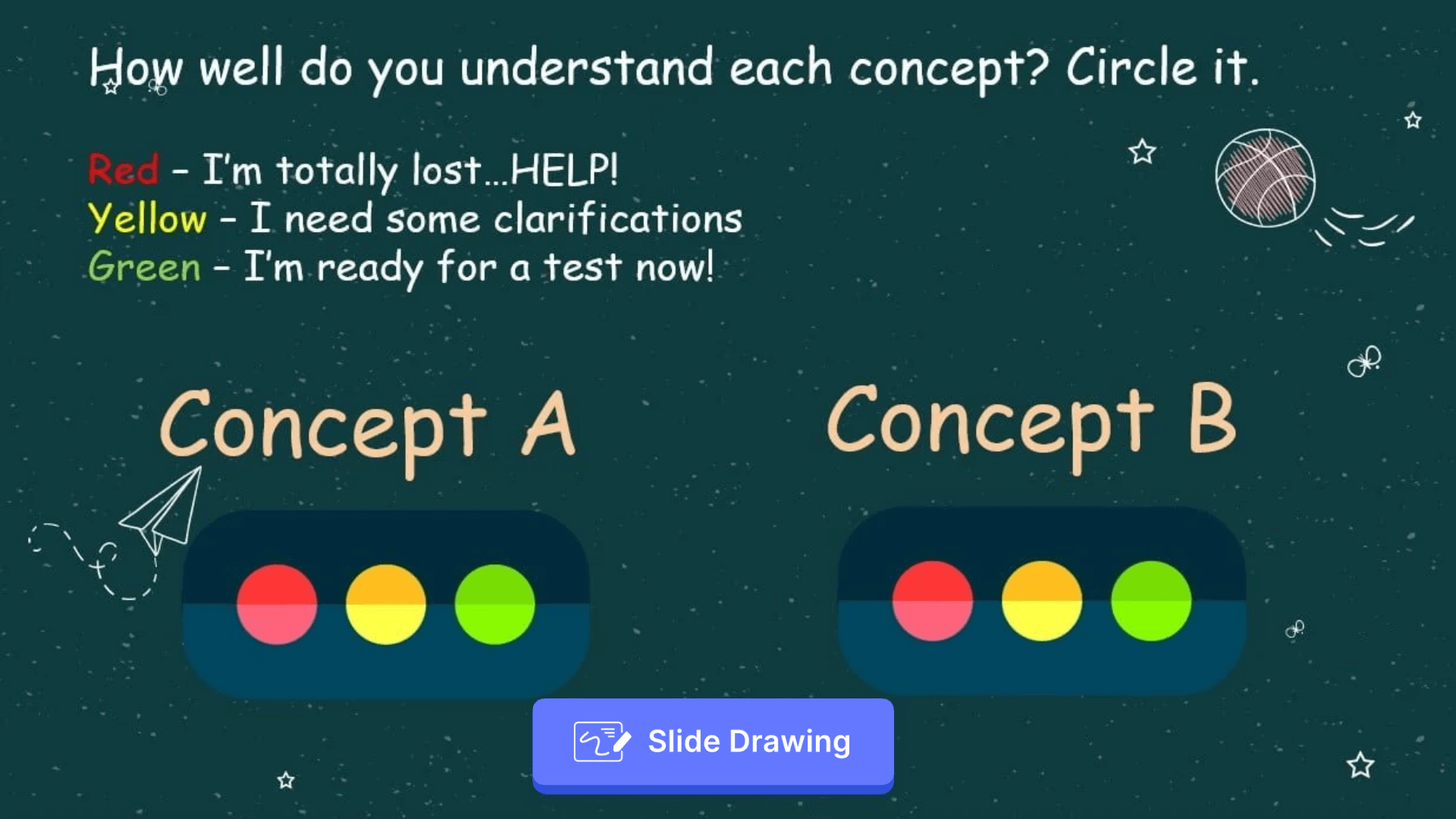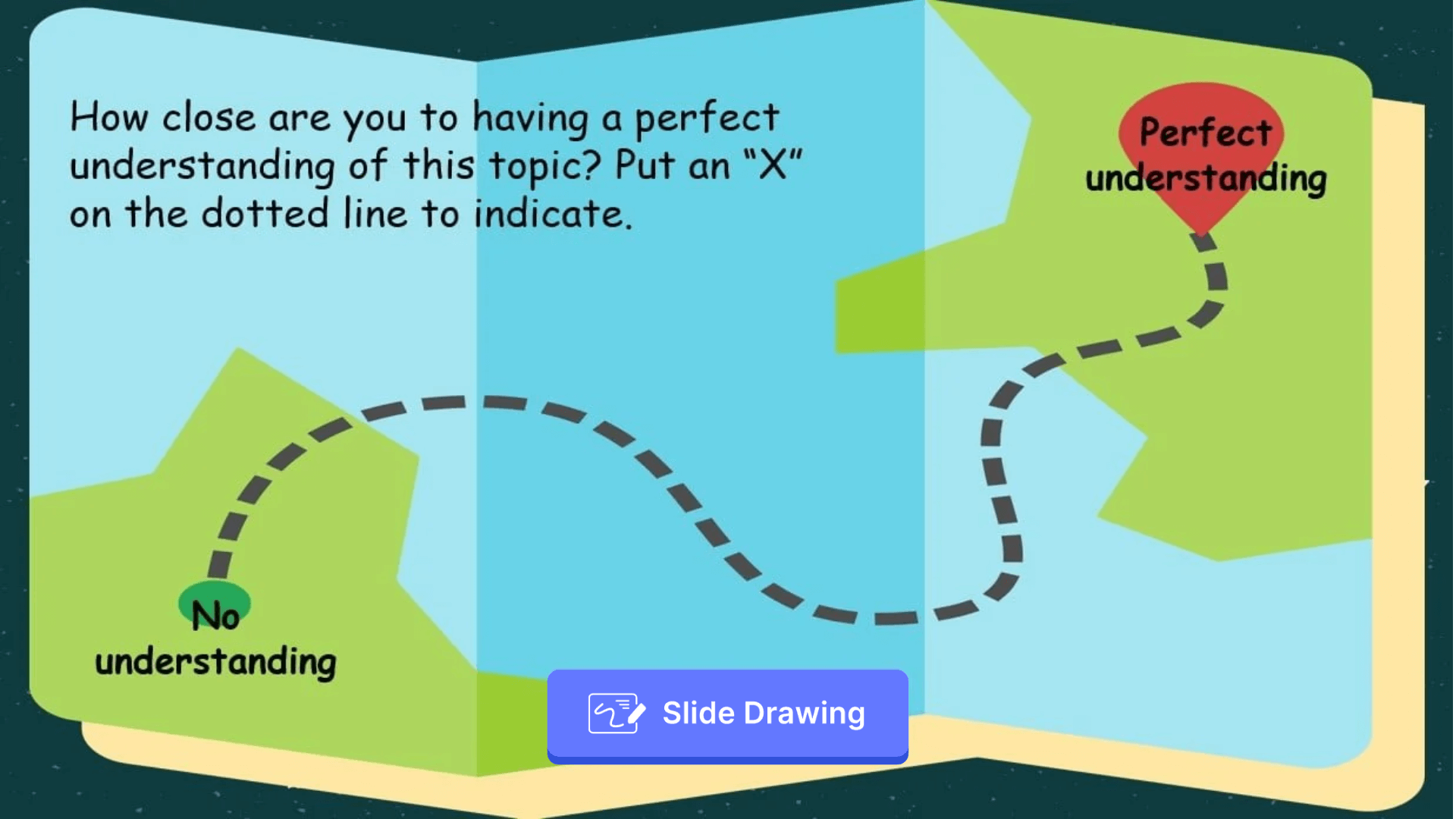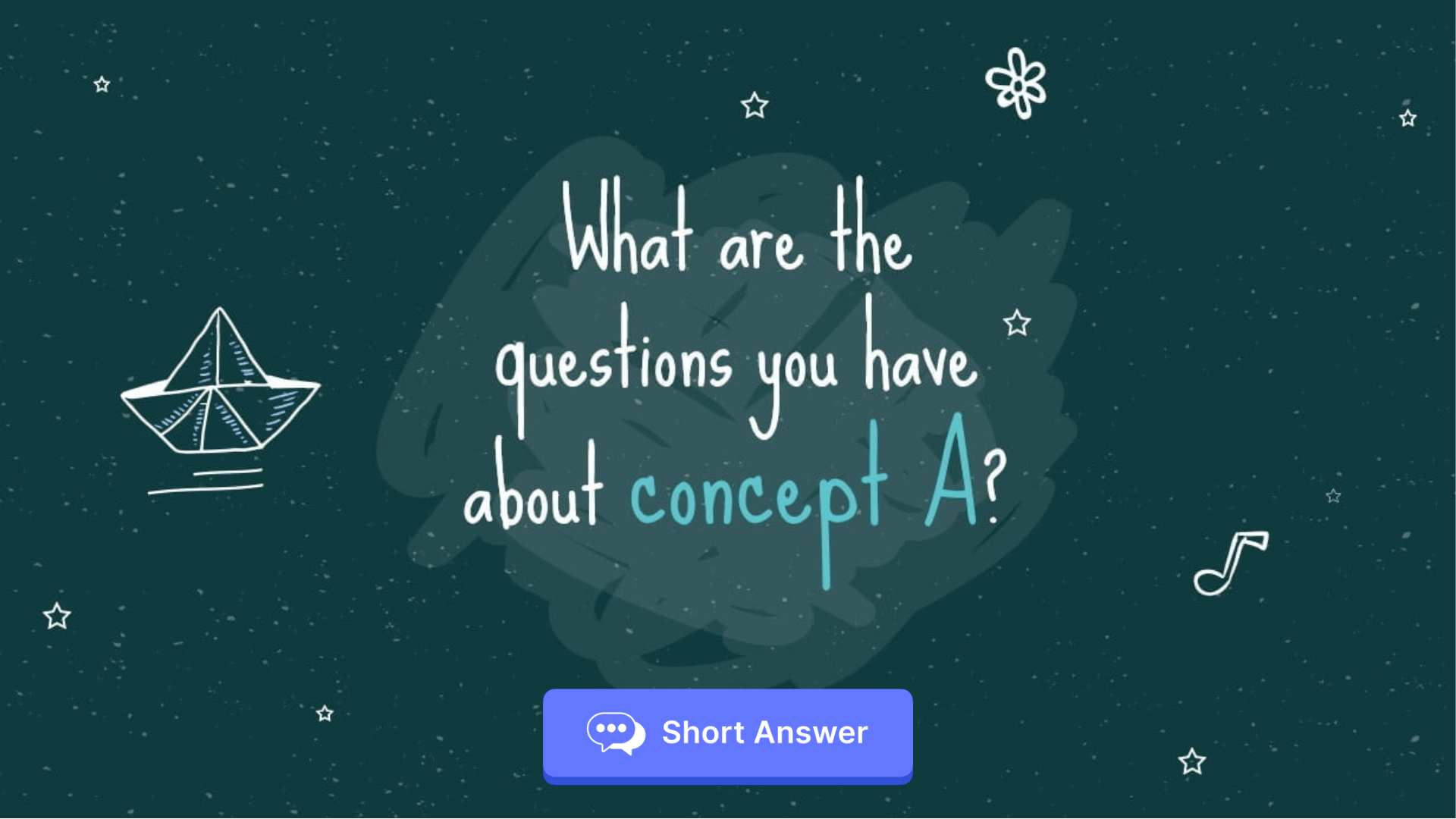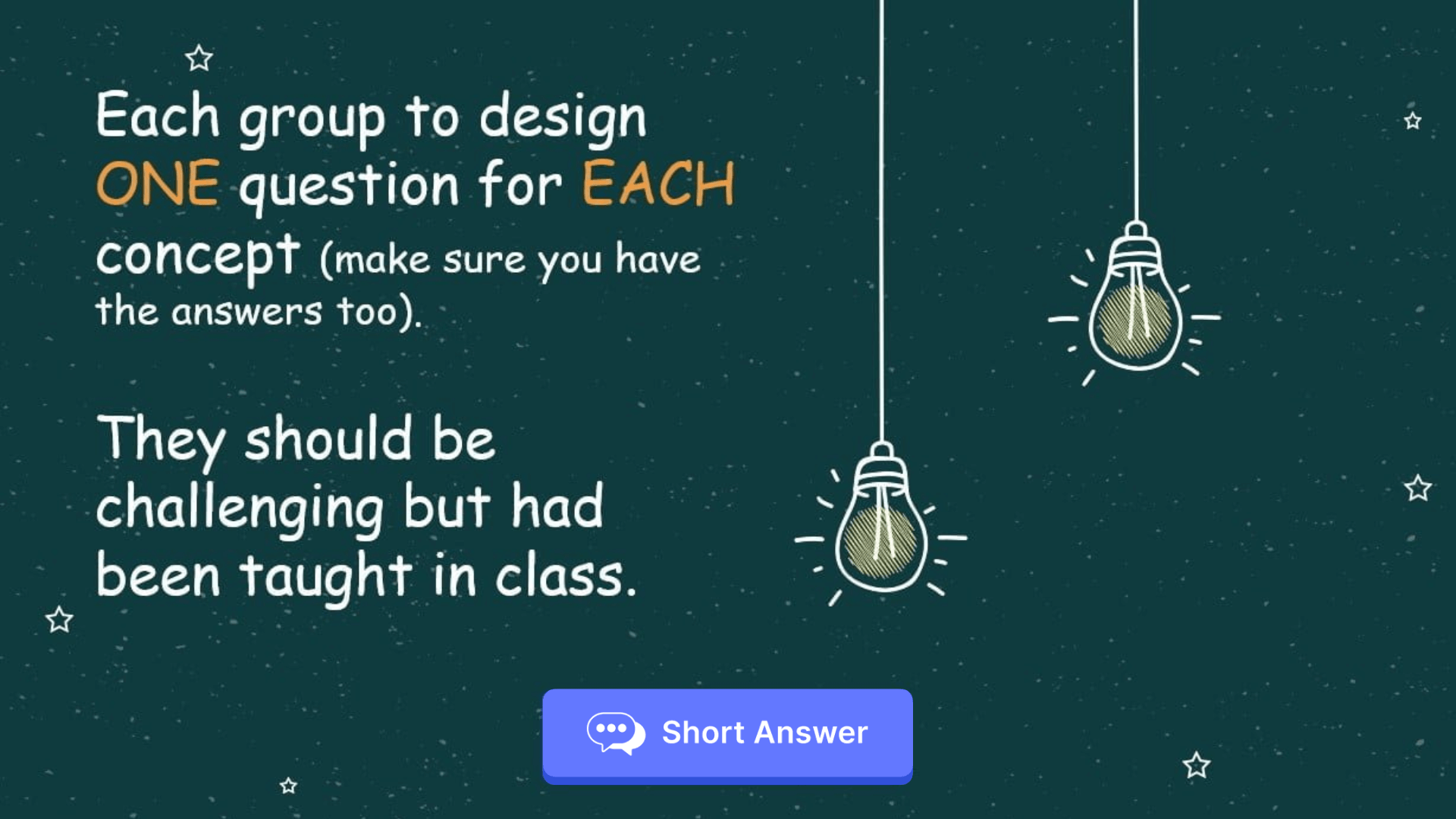Closing activities are excellent ways to find out how much and what students have learnt from your lesson. This information can greatly help you, as the teacher, to assess learning gaps and provide valuable insights into the focus and pace for your subsequent lessons. Apart from the usual quizzes, what other activities can be done to elicit this information? In this blog, we will share the 4 best closing activities you can do with your students!
Activity 1: Self-Assessment
Using the slide drawing function in ClassPoint, you can easily find out how every student gauges their own level of understanding for each concept in the given chapter. You might also want to do this activity as a prelude to the next activity to find out the exact challenges they are facing for each concept. This can provide you with key information on the areas of focus for each individual.
To foster collaborative learning in the classroom, you can even have students who are strong in certain concepts to peer-teach classmates who are facing challenges.

A variation to this closing activity is to have students indicate the extent of their understanding. With the map, they will indicate with an “X” the distance they are from attaining “Perfect understanding”. If they are equipped with a digital pen and tablet, consider getting them to pen down the challenges they face that are hindering them from achieving “Perfect understanding”. Or you can also use Activity Two in the next section to find out.

Activity 2: Self-Diagnosis
Getting students to ponder over the questions they have about the different concepts as one of the closing activities, helps them to pinpoint specific problematic areas. This can be easily done by using the short answer function in ClassPoint. Students are guided through a structured reflective process when Activities One and Two are conducted sequentially. This particular activity is where students are providing the “why” behind their responses for Activity One and will help to give you vital information to close some of these learning gaps.
You can even consider using some of these questions posed by students as a mini quiz in the subsequent lessons after their doubts had been sufficiently addressed, to reinforce their understanding.

Activity 3: Involving Students in Question Setting
If two heads are better than one, perhaps twenty heads are better than two?? Rather than cracking your head to design questions to assess students’ understanding, how about getting some help from your students to do this collaboratively as a closing activity?
Group the class into small teams with each team designing a short answer question for each concept or as many questions as you deem reasonable. After this, have two teams exchange their set of questions and respond to them. Turn this into a fun and friendly competition and to up the excitement level, having it as a timed activity will surely do the trick!
(Tip: I will not recommend having students set MCQ because setting questions of this format presents a few challenges. First, it can be difficult for students to set higher-order thinking questions with this format. Second, it can also be tough for students to come up with plausible yet wrong options as distractors, this can also be time-consuming)

Activity 4: Mind Maps
Having students work on a mind map in small teams is a superb closing activity! Not only will they need to recall the concepts they had learned in a chapter, but they will also need to be able to identify interrelationships between the concepts. This is definitely an effective way to deepen understanding and increase retention of knowledge.
After the teams are done with their mind maps, they can then snap a picture and upload it using the image upload function in ClassPoint, how convenient!
As an extension of this closing activity, save all teams’ mind maps and insert them as slides. Each image will then be individual slides in the deck. With that, insert the slide drawing function for each mind map and have other teams help improve one another’s mind maps by writing comments (this will work better if students own a digital pen and tablet or if their device is a touch screen). In this way, all your students will be so actively engaged in giving feedback and helping one another learn better.

These are the four closing activities you can do in your class to actively engage your students. With these downloadable activity slides, your lessons will not simply end off with “any questions?” which typically yields no response. Instead, as a teacher you will now possess crucial information to guide your pace and focus for your subsequent lessons, fully aware of individual students’ needs. No more guesswork…how awesome!
In addition, with some of these activities, your students are even working collaboratively. What a great way to nurture a strong and supportive classroom environment!
Have fun trying out these closing activities in your lessons and leave us a comment on how it worked out for you and your students. We would love to hear your stories.